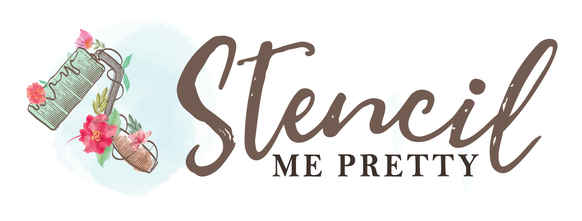EVERY STENCIL IS MADE WITH ❤ IN DENVER CO.

How to Paint a Stencil Wall in 6 Easy Steps
By: Divya Gupta
The art of stenciling can be peaceful and therapeutic. By using stencils, you can DIY almost any space and give it an elegance of handcrafted finish. Also, such projects help you achieve creative satisfaction, which makes them even more charming!
There are various reasons why we love stencils so much –
-
It is inexpensive! Installing a wallpaper involves spending hundreds of dollars, a cumbersome process, and many sleepless nights. Whereas stencil costs a fraction of that amount, looks spectacular, and includes a lot of fun moments.
-
A DIY stencil project is great if you have commitment issues. You can repaint the entire wall anytime and give it a fresh look. All you have to do is even out the surface using sandpaper and splash a bucket of your favorite color over it.
-
The best part about stenciling is that it's super quick and easy. If you use the right tools, a DIY stencil wall can be a cakewalk!
So, if you are looking for ways to revamp your walls in a cost-effective way, you should definitely try your hands at stenciling. By following simple tips and tricks you can transform your living room, home office, bathroom, or any other nook.
Here are some useful tips that will help you ace your stencil game and create a ravishing accent wall.
1. Select the Right Paints
Paints will ultimately decide how your space turns out. Always go for good quality acrylic or chalk paints to get a flawless finish.
Ditch the traditional white walls and opt for opulent colors like royal blue or black to get a classy feel. Here, we have used deep green to achieve a rich monochrome look.
2. Prepare your Base
Before starting your wall stencil project, make sure the base is smooth and clean. You can use sandpaper to remove the paint peel offs or crappy patches.
Once your surface is even, apply the base coat with your desired paints.
3. Measure the Placements
With repetitive patterns, it is essential to have a symmetrical arrangement. Use a bubble level to mark equal spaces and create a repetitive pattern.
 If you want to make borders on the edges, leave space for that, and measure the exact location of your stencil. Secure the stencil using adhesive spray or painter’s tape and make sure it's fixed properly.
If you want to make borders on the edges, leave space for that, and measure the exact location of your stencil. Secure the stencil using adhesive spray or painter’s tape and make sure it's fixed properly.
4. Choose a Gorgeous Pattern
Designs speak louder than paints. Select a pattern that blends with your interior space. Experiment a little and try to opt for bold patterns to get a statement look! We used a Victorian Stencil for this piece wall:
At Stencil Me Pretty, there are a plethora of designs, from florals to mandala patterns, that can ameliorate any wall!
5. Less Paint is More
While painting on the stencil, always make sure you dab the roller to get rid of the excess paint. This will help you avoid any bleeds and leaks.







Comments
Leave a comment